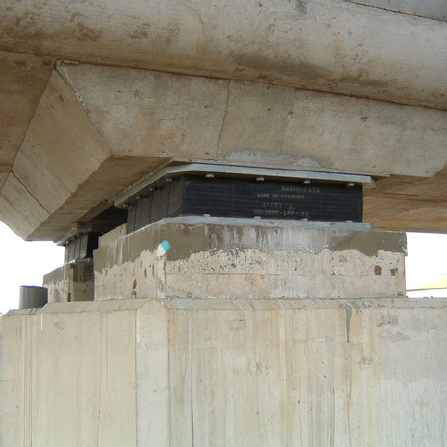The Importance of Bearing Pads in Bridge Safety

What are Bearing Pads?
Bearing pads are devices generally made of rubber, neoprene or polyurethane, designed to support and distribute loads evenly. They are placed between structural elements of the bridge, such as beams and columns, to reduce friction, absorb vibrations and accommodate movements caused by thermal expansion and seismic activity.
Benefits of Bearing Pads
- Friction Reduction: By minimizing direct contact between metal surfaces, bearing pads significantly reduce friction, which prolongs the life of structural components.
- Vibration Absorption: These devices are able to absorb vibrations caused by traffic and other factors, improving the comfort and safety of the bridge.
- Adaptibility to Movements: Bearing pads allow the bridge to adapt to movements and deformations, avoiding structural damage and ensuring stability.
- Resistance to Extreme Conditions: Made from high-quality materials, bearing pads are resistant to extreme weather conditions and exposure to chemicals.
Applications in Bridge Construction
In bridge construction, bearing pads are used in a variety of applications, including:
- Road Bridges: To support heavy traffic and dynamic loads.
- Railway Bridges: Where vibration absorption is crucial for passenger safety and comfort.
- Pedestrian Bridges: To ensure stability and safety for pedestrians.
At Everest Group, we specialize in manufacturing and supplying high-quality bearing pads for the construction industry. Our products are designed to meet the highest standards of safety and durability, ensuring that every bridge built with our bearing pads is safe and reliable. For more information about our products and services, please feel free to contact us. We are here to help you build safer and longer lasting bridges!




